|
VISIT OUR FRIEND AT FAFSA
FILERS! GET THE FINANCIAL AID YOU DESERVE!
THE FAFSA PROFESSIONALS AT FAFSA FILERS HAVE HELPED THOUSANDS OF STUDENTS
FILE THEIR FAFSA ONLINE OR OVER THE
PHONE.
*This page contains aspects that may only be viewed properly in Internet Explorer 4.0 or higher. Netscape users may experience some difficulties.
|
Introduction
Megiddo--the ruins of which are Tel Megiddo--is an ancient, fortified city near the mouth of the Jezreel Valley in modern-day Israel. Mentioned in at least 6 separate books of the Bible, some historians believe that this city in the Near East was the site of more battles than any other place in history. The citizens of Megiddo, at different times in the city’s history, faced off against the various armies of Assyria, Canaan, Egypt, Greece, Israel, Persia, Philistine, and Rome. Even a decisive battle between English and Ottoman forces occurred near there in World War I.
The city, which was inhabitied continuously from 7000-500 BCE, was no doubt defended and conquered so many times due to its position along antiquity’s major superhighway, the Via Maris. From Megiddo its rulers were able to exert control of an entire region, having only to defend the extremely narrow Aruna pass. With its seemingly endless cycle of conquest and revolt, it is no wonder the Hebrew mythmakers set the final battle known as "Armageddon" (literally the mount of Megiddo) here.
Location
Tel Megiddo is located in what is now known as the Valley of Jezreel--in ancient times it was referred to as the Plain of Esdraelon. Megiddo’s location, near the valley’s point of entry, guarded the Aruna pass, one of the most strategic passes through the Carmel mountains. Consequently, Megiddo was able to exert control over what in ancient times was known as the Via Maris, or "Way of the Sea." The Via Maris acted as a major road between Egypt and Mesopotamia, and it is believed that people from all over the ancient world passed through, settled, and battled there.
History
Megiddo’s importance in the region can be inferred from the fact that it is the only Israelite settlement mentioned by every great power of the ancient Near East. Megiddo was the site of several major battles, each of which held the fate of all Asia west of the Euphrates in the balance. The current excavators, headed by Israel Finkelstein and Baruch Halpern, describe Megiddo as "the queen of cities of Canaan and Israel." In fact, some of its palaces are believed to have been constructed by King Solomon--indirectly of course.
It is believed that during the 4th millenium BCE, Megiddo like began to assert its dominance over the other polities in the region. This makes its appearance as a power roughly contemporaneous with that of Egypt. In fact, the Egyptians had their eye on their classmante’s strategic location, and by the 2nd millenium, the Egyptians had conquered the city and made it an administrative outpost.
It is during the 2nd millenium BCE (ca. 1468 BCE), that the first major battle occurred at Megiddo. It involved the Canaanites who were revolting against the rule of the pharaohs. The Canaanite rebels assembled themselves against Thutmose III, but were defeated and fled inside Megiddo’s walls. After a siege of seven months, the city surrendered and Thutmose added it as another jewel to Egypt’s crown. To read a translated Egyptian account of the First Battle of Megiddo, click here. Or, re-enact the famous battle with downloadable software.
Additional evidence for Megiddo’s subjugation by Egypt comes in the form of letters sent by Biridiya, the king of Megiddo, to the pharaoh Amenhotep IV (a.k.a. Ahkenaton) in which Biridiya affirms his allegiance to the pharaoh and pleads for assistance in quelling a local revolt. Other pharaohs who mention Megiddo include Ramses II (a.k.a. Ramses the Great).
Early Hebrew heroes like Joshua were also involved in Megiddo’s history. The Hebrews under Joshua allegedly killed the king of Megiddo, but they were unable to capture the city until the time of David (ca. 1000 BCE). Eventually, Solomon (ca. 967-927 BCE) enlarged the settlement and, like the Egyptians, used it as an adminstrative capital in his kingdom. Unfortunately, the city was later destroyed by the conquering pharoah Shishak--the same pharoah who allegedly stole the ark of the covenant in Raiders of the Lost Ark.
However, the city was once again rebuilt only to be conquered by the Assyrians in circa 732 BCE. Because of Megiddo’s strategic trade location along the "Way of the Sea" or Via Maris, the Assyrians also utilized it as a provincial capital. In 609 BCE the second major battle occurred at Megiddo between Josiah, a king of Judah, and Necho II. Josiah was defeated, and Megiddo was eventually abandoned sometime during the Hellenistic period (ca. 500 BCE). Yet the site continued to achieve footnotes in history even after its abandonement. The sixth legion of Rome once camped near the tell, and in World War I, British Field Marshall Edmund Allenby fought led his cavalry against a contingent of Turkish soldiers who guarded the remnants of the disintegrating Ottoman Empire. Interestingly, Allenby borrowed a page from Thutmose III and applied his same tactic of charging his men through the narrow Aruna pass so that he could surprise the enemy.
Previous Excavations
Megiddo has been the site of three previous archaeological excavations. The first of these was undertaken from 1903-1905 by Gottlieb Schumacher under the auspices of the German Society for Oriental Research.
In 1925, the second excavation began at the site. This time it was conducted by the Oriental Institute of the University of Chicago. The project continued until the outbreak of of World War II. This series of excavations unearthed twenty separate levels of occupation that spanned the whole history of the site. Among the most impressive of the remains were large fortifications, an area known as the "iron gate," the city’s water system, several palaces, and what are known as the "Solomonic stables."
Megiddo’s water system served to protect the city’s water supply during times of warfare--which were often--and consisted of a large shaft that extended some 120 feet into the ground. The shaft was linked via a 215 foot tunnel to a spring located beyond the defensive fortifications of the city. It is through this ingenious construction (ca. 800 B.C.E.) that Megiddo’s citizens were able to keep themselves hydrated in the midst of siege.
Interestingly enough, this is roughly the same time period (ca. 1922-25) that young Henry Jones, a.k.a. Indiana Jones, studied under Professor Abner Ravenwood at the University of Chicago. For those Indiana Jones fans out there, it should be suggested that a fourth movie in the series would do well to set itself at Megiddo for reasons which should be apparent.
The third series of excavations was carried out by Yigael Yadin of the Hebrew University of Jersalem. These digs from the late 1960s to early 1970s uncovered a structure now termed Palace 6000. Palace 6000 has a special significance because it is believed to have been constructed during the reign of King Solomon.
These early excavations all helped to lay the groundwork for the field of inquiry commonly known as biblical archaeology. Biblical archaeologists and more specious individuals (e.g. Graham Hancock, Erich von Daniken, etc.), now delve into questions regarding exactly who the ancient Israelites were, who they interacted with, and how they lived.
Current Excavations
Current excavations at the site are being conducted by archaeologists from Tel Aviv University in association with archaeologists from Pennsylvania State University. The main goal of this most recent series is "to clarify the stratigraphy and chronology of Megiddo, from the Early Bronze Age to the late Iron Age and to shed light on specific historical problems such as state formation of Israel in the 10th-9th centuries BCE" (Unknown, The Megiddo Expedition).
Since 1998, these archaeologists have conducted ongoing excavations in five areas (labeled F, H, J, K, L & M) of the site. This series of digs was featured in the November/December issue of Archaeology magazine. An abstract of the article can be viewed by clicking here. These excavations will continue through the 2000 season and beyond. If you’re interested in digging at Megiddo, click here for information on contacting and applying to the field school.
Inspired by the techniques of Heinrich Schliemann, this area was first excavation by Schumacher at the turn of the century. Previously assumed to date to the Middle Bronze Age, the current dig at Megiddo has discovered evidence of late Bronze Age and Iron Age settlements too: "The big surprise last season was that the lower mound [in area F] was actually prominently occupied in the late Bronze Age and featured a large monumental structure" (Finkelstein et al. 2000). This re-dating of the area places its occupation within the time of Solomonic Megiddo (ca. 10th century BCE).
Finkelstein and his colleagues have found a lot of Early Bronze Age pottery at the site, and their goal for this season's dig is to discover exactly when settlement began in Area F. They also plan an increased focus on domestic archaeology and a fortified rampart in the area.
Area H has yielded evidence of the last days of Israelite Megiddo--the Israelites were permanently driven out in 732 BCE by the Assyrians. This area shows extensive remains of Assyrian architecture, noted by huge earthen mounds on top of which palaces were constructed. Area H is the only place in the site that has escaped destruction by archaeologists: "Area H is almost the only place left which still has the complete stratigraphy of the upper layers of settlement left in place" (Finkelstein et al. 2000). Unfortunately, archaeology often involves destruction at the price of gaining new knowledge, however, archaeologists are going to try and use the stratigraphy in H to correlate dates in area AA. Furthermore, they're going to excavate a city wall in this area.
According to the current excavators, "Area J contains the most spectacular sequence of temples ever found in the Levant, from the Early Bronze to the Late Bronze Age" (Finkelstein et al., The Megiddo Expedition). The first occupation of this area dates to the earliest occupation of the site (4th millenium BCE. Among the things discovered within the last year is a "monumental" compound from the Early Bronze 1B (ca. 3100-3500 BCE). The compound consists of stone walls some 4 meters wide that run parallel to one another. Between the walls were "hip-deep" faunal remains assoicated with ritual sacrifice. Excavation of this area is on-going.
In Area K archaeologists continue to excavate Stratum VA-IVB. Tests have concluded that these levels were destroyed by fire. It is believed that one of these layers possibly represents Megiddo at the time of Solomon. Linking the correct strata to Solomon would be crucial to matching biblical history with archaeological evidence. Since the Solomonic times were allegedly ones of great prosperity and wealth for the Israelites, it will be interesting to discover whether these accounts "hold up under fire," so to speak. Digs in the summer of 2000 will continue to explore this question.
This is the area where Yigael Yadin identified the structure now known as Palace 6000. Yadin describes this palace as resembling its Syrian counterparts. Palace 6000 has commonly been associated with Solomonic Megiddo, but recent evidence suggests that the structure may be from a later period. Excavation revealed three strata. The upper strata dated to the Assyrian Period. The second level included the stables where "each unit is built of three longitudinal halls, separated by a row of mangers and stone pillars" (Finkelstein et al.: 2000), and the adjacent halls are paved with plaster. Currently, though these structures have been traditionally labeled "stables," archaeologists are unsure of their exact use. Finkelstein suggests that they could have been used as stables, storehouses, barracks, or market-places. In order to help solve this puzzle, archaeologists have begun taking samples of dirt from the structure's floors in order to determine what animal waste is present, reasoning that stables would have horse waste, barracks would have human waste, and a market-place would have an amalgation of wastes.
From 1998 to the present, the dig has been excavating some aspects of Area M that have not been touched since Schumacher's original expedition to the site at the turn of the century. Four squares were excavated near a large stone tomb that was originally investigated by Schumacher. The tomb is believed to be that of a king of Megiddo, probably from the 2nd millenium BCE. With new techniques the fieldworkers were able to date the tomb to the late-Late Bronze Age. This is significant since previous dates set the tomb in the Middle Bronze Age.
Tel Aviv University's Eyal Buzaglo, an MA student, is performing a petrographic study of Iron Age pottery from Megiddo. His ananlysis includes assemblages throughout the entire Iron Age sequence at Megiddo, and it will compare the petrographic results there with other sites in the Jezreel region. The hope is to be able to come to a broader understanding of Megiddo's economy in the Iron Age as well as its involvement in trade with other centers.
Advances in archaeological technology have enabled the excavators to use magnetometers. These machines are able to detect the differentiation in magnetic properties between archaeological "targets" and surrounding rocks and soil. The result is that they are able to detect buried remains without having to dig to find them. Not only does this save time and money, it also helps to conserve the site since the most destructive part of archaeology is digging--especially if when you don't know if you're going to find anything.
Magnetometer results in 1999 "revealed three clusters with Early Bronze Age remains" (Finkelstein et al., The Megiddo Expedition). Right now, researchers are trying to determine whether these clusters are linked temporally or whether they represent different occupations over time. If the sites turn out to be contemporaneous, then it will make Megiddo the largest Early Bronze Age site in the Levant region.
Named for its sponsor (German-Israeli Foundation for Research and Development), the GIF Project examines state formation in the northern kingdom of Israel. Archaeologists are comparing textual materials to the current socio-political theory. This is similar to the studies being conducted in Area K where archaeologists are trying to match recorded textual history with archaeological remains. Right now, the project is focusing on Palace 6000 in Area L and conducting a survey of the Jezreel Valley to determine larger settlement patterns in the region.
| View of the Jezreel Valley |
| View of Tel Megiddo from the Jezreel Valley |
| Entrance to the tel and view of altar and silo |
| Entrance to and overview of the tel |
 |
 |
 |
 |
 |
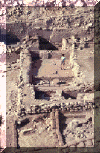 |
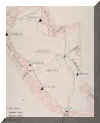 |
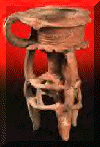 |
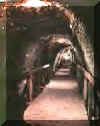 |
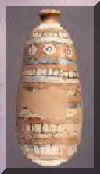 |
| Finkelstein, Israel et al. |
| 2000 The Megiddo Expedition; available from http://www.tau.ac.il/~archpubs/megiddo/ |
| excavations2.html; Internet; accessed 2 May 2000. |
| Silberman, Neil Asher et al. |
| 1999 Digging at Armageddon; Archaeology; November/December 1999, pp. 32-39. |
| Unknown |
| 2000 Archaeological Sites: Megiddo; available from |
| http://www.bibarch.com/ArchaeologicalSites/Megiddo.htm; Internet; |
| accessed 2 May 2000. |
Visit our friends at Biblica.com and Pinko Commie Bastard.
Comments or questions about this page should be directed to Trephining@aol.com.
This page was last updated on September 11, 2000.